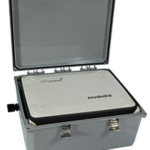As we try to build the national Smart Grid in the most productive ways possible, one must think about all of the different types of technology without favoring one communications or networking technology above another. Taking into account its growing importance, satellite networking technology must play a decisive part in Smart Grid initiatives for the utility industry.
Satellite SCADA solutions deliver:
high availability
ubiquity
path diversity
The Supporters
The mobile satellite communications market is totally devoted to delivering an innovative category of Internet Protocol (IP)-based communications such as Satellite SCADA. A powerful smart grid depends on a strong network and remote communications infrastructure. This is significant for businesses to take into account whenever implementing their very own smart grid endeavors. It is not realistic to expect any one-size-fits-all communications solution to suit smart grid execution. By far the most practical strategy to satisfy this demand will be to take advantage of the wide array of transport technologies out there while counting on common open standards, like the aforementioned Internet Protocol (IP) standard, to incorporate into a individual overall network architecture. Although numerous types of broadband platforms might be employed, it is the businesses perception that the IP standard should be used for the end-to-end network layer should be used for the end-to-end network layer.
Satellite SCADA based services are an essential part of the multi-technology strategy demanded by the utility industry to obtain an end-to-end, smart grid communications infrastructure — one that will be reliable, fast, secure, and cost-efficient. Accordingly, the DOE must establish guidelines that are technology-neutral, never favoring an individual communications or networking technology more than another.
 The Solution
The Solution
Established satellite networks can be leveraged straight away to satisfy communications demands for utilities and Smart Grid. Satellite posseses an essential function for Smart Grid applications in the following crucial areas
Distribution Automation – A single, higher availability connection with an entry way which is fed by distribution devices, supports the traffic profile, high availability, and ubiquity.
Advanced Metering Infrastructure (AMI) – Satellite provides a high-quality, affordable alternative to the conventional technologies, which have suffered with congestion, loss in coverage during disaster, and limited range. Satellite operates on safe networks, are not susceptible to public usage and its utilization of innovative antenna designs provide for much easier set up.
Mobile Work Force – New satellite technology may cost-effectively deliver rewards such as on-the-move vehicle connectivity and higher bandwidth
Disaster Recovery – Satellite technology is integral to disaster-recovery programs of utilities. Actually, the National Broadband Plan recommended the “use of broadband fixed and mobile satellite service for emergency preparedness and response activities, as well as for national security, homeland security, continuity and crisis management.”
Clearly, broadband IP Satellite SCADA services are fundamental to our nations foreseeable future, and needs to be looked at as the most effective solutions to permit the Smart Grid to function at optimum efficiency.

